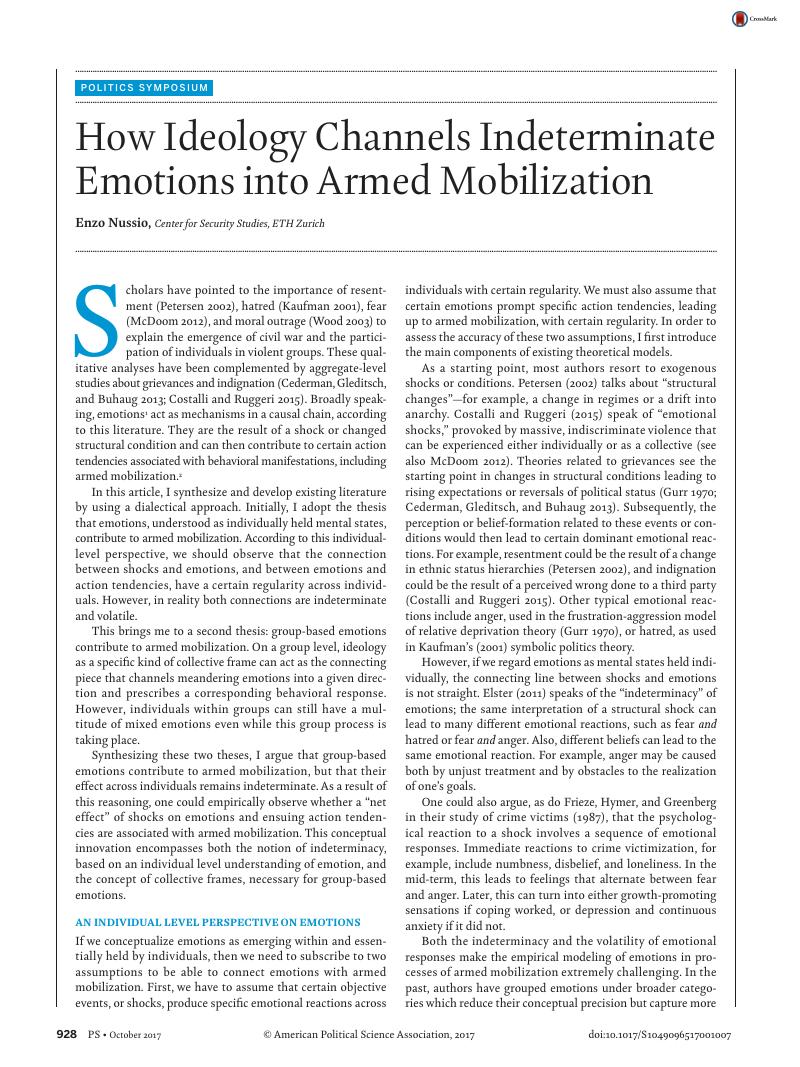Crossref Citations
This article has been cited by the following publications. This list is generated based on data provided by Crossref.
Nussio, Enzo
2019.
Can Crime Foster Social Participation as Conflict Can?*.
Social Science Quarterly,
Vol. 100,
Issue. 3,
p.
653.
Nussio, Enzo
and
Ugarriza, Juan E.
2022.
¿Por qué los rebeldes dejan de luchar? Declive organizacional y deserción en la insurgencia de Colombia.
Colombia Internacional,
p.
207.
Savelyeva, Natalia
and
Erpyleva, Svetlana
2023.
Why Fight? The Combatant Careers of the Anti‐Kyiv Fighters in the Donbas War1.
Sociological Forum,
Vol. 38,
Issue. 4,
p.
1220.
Basic, Goran
and
Delić, Zlatan
2024.
Ideology, war, and genocide – the empirical case of Bosnia and Herzegovina.
Journal of Contemporary Central and Eastern Europe,
Vol. 32,
Issue. 1,
p.
95.



